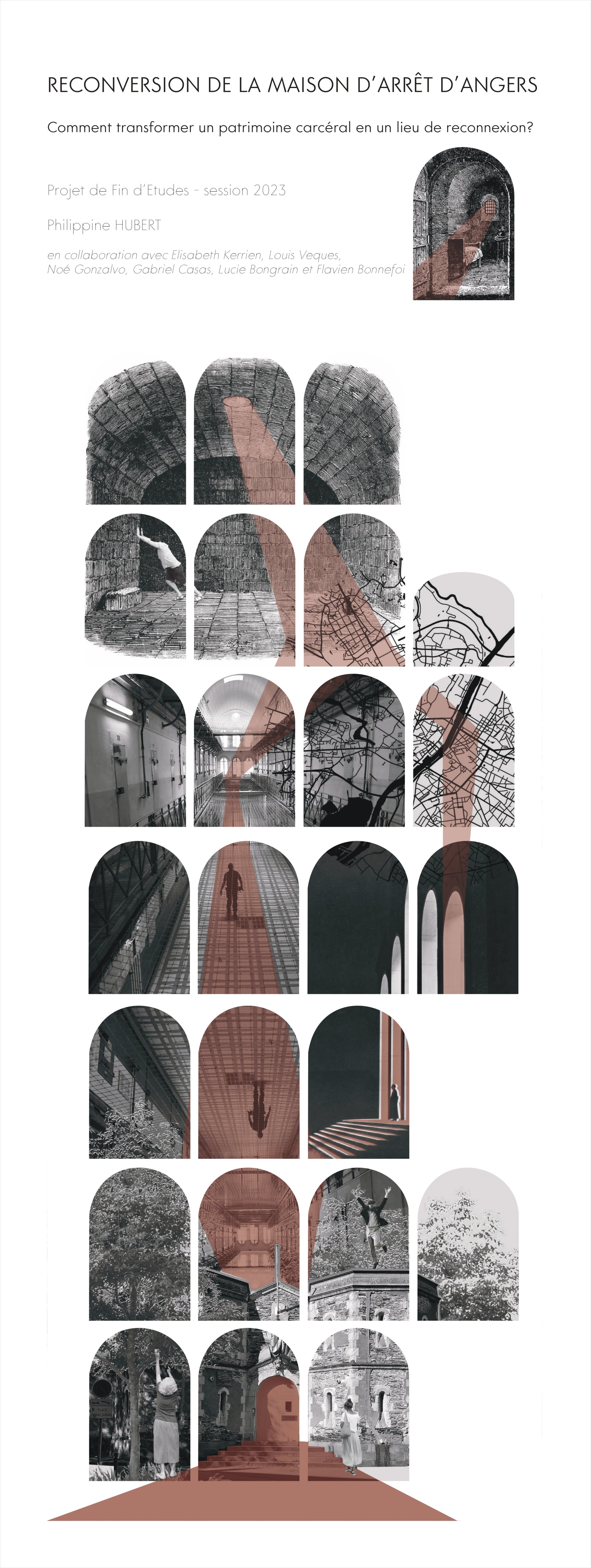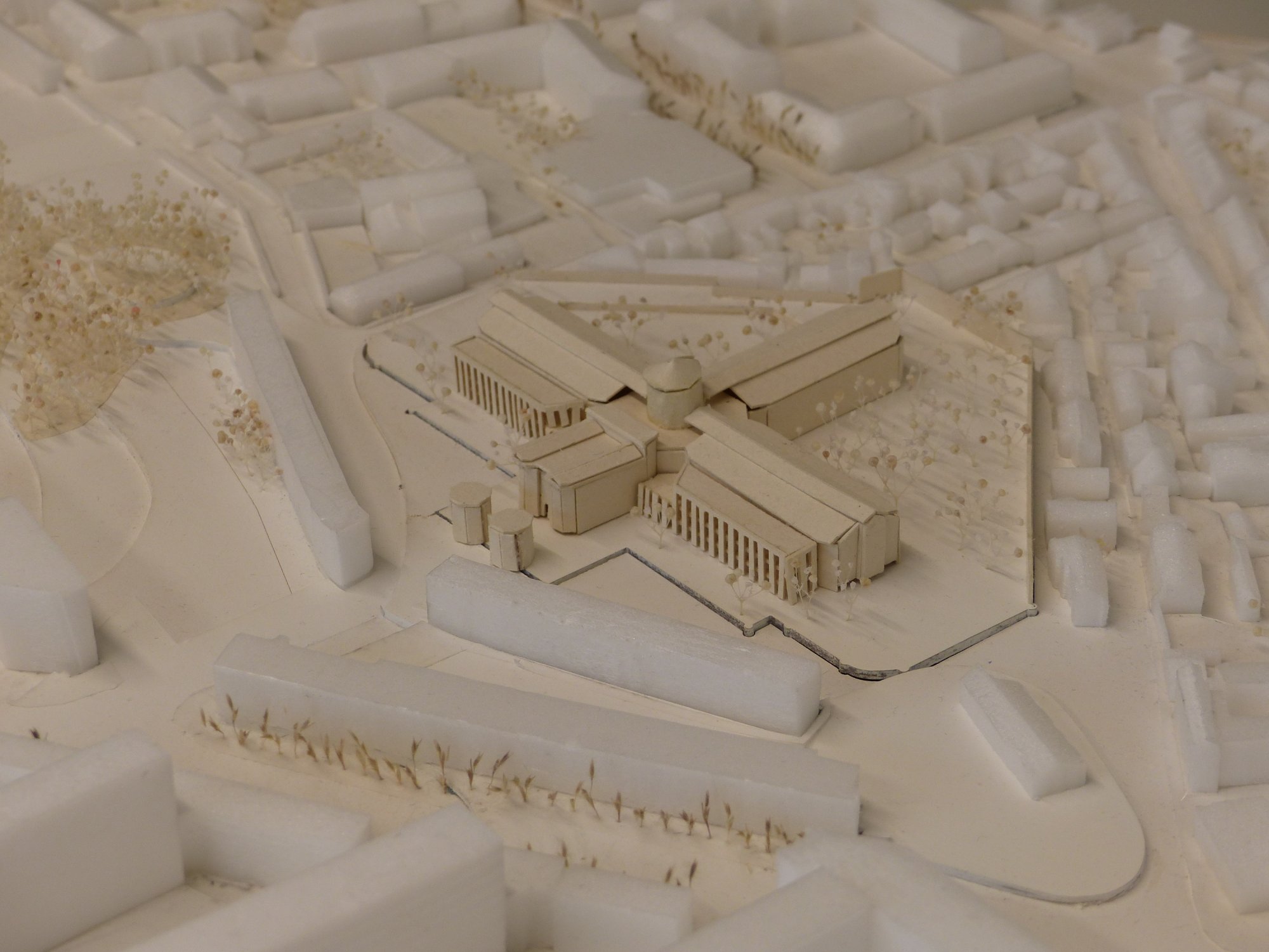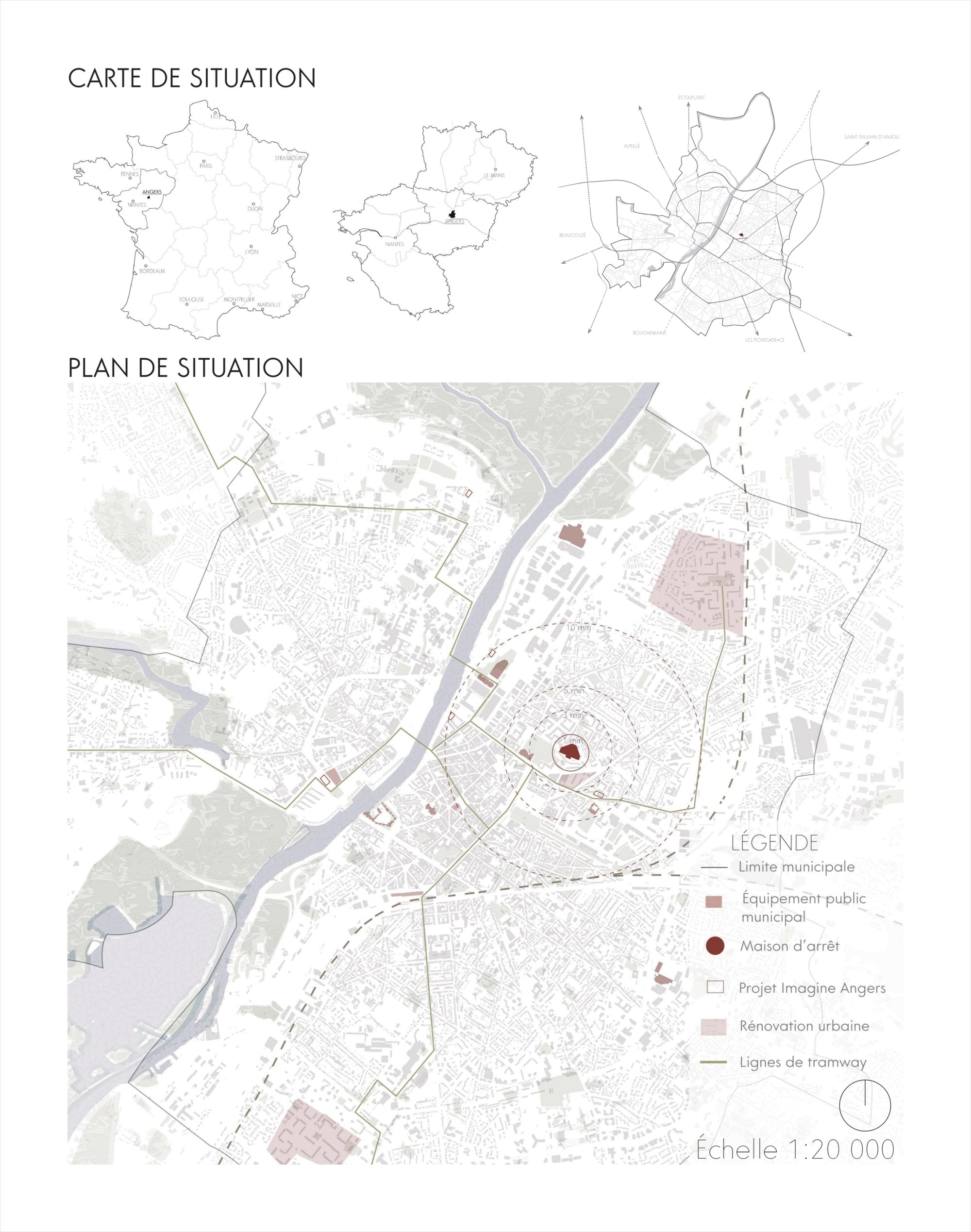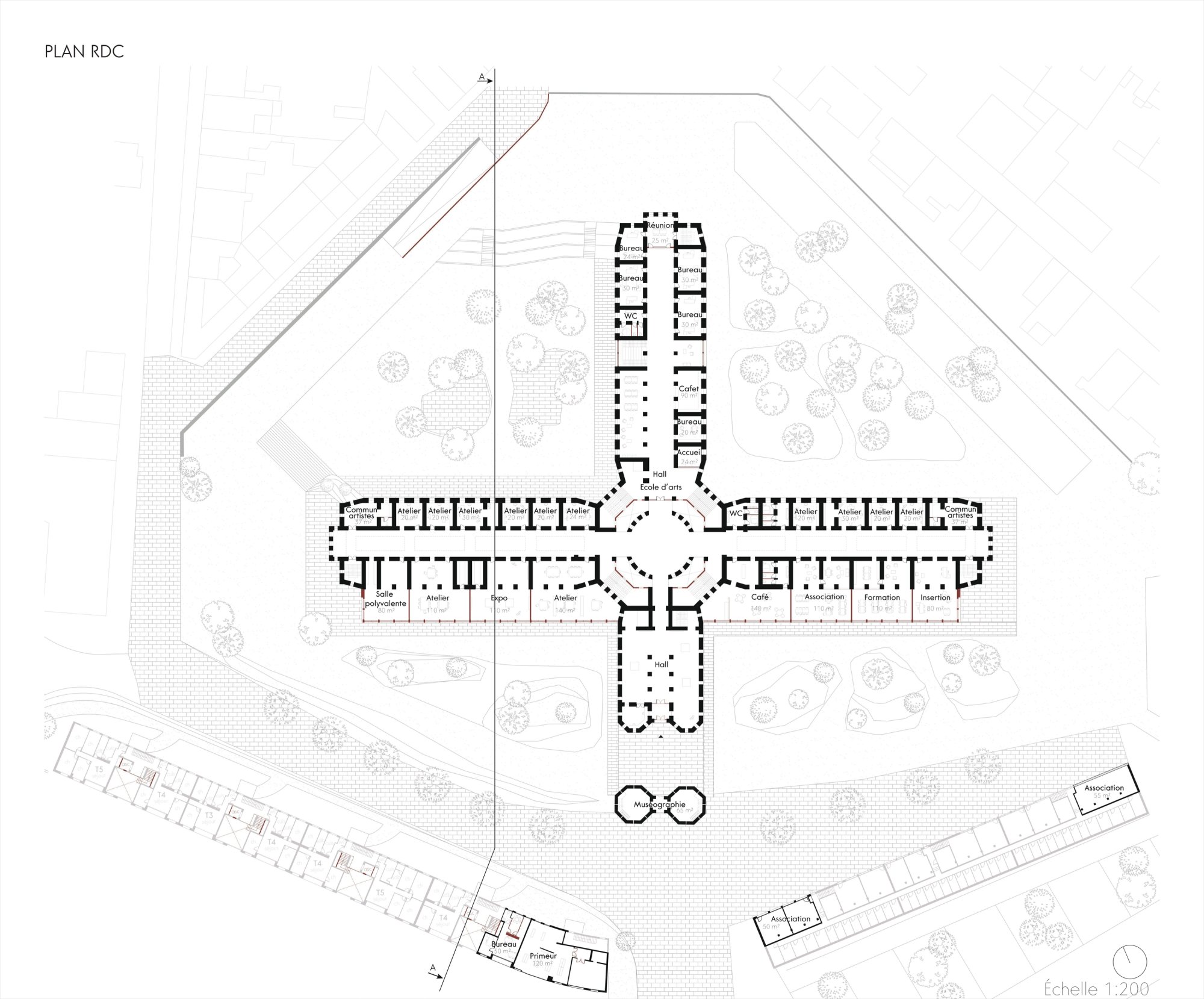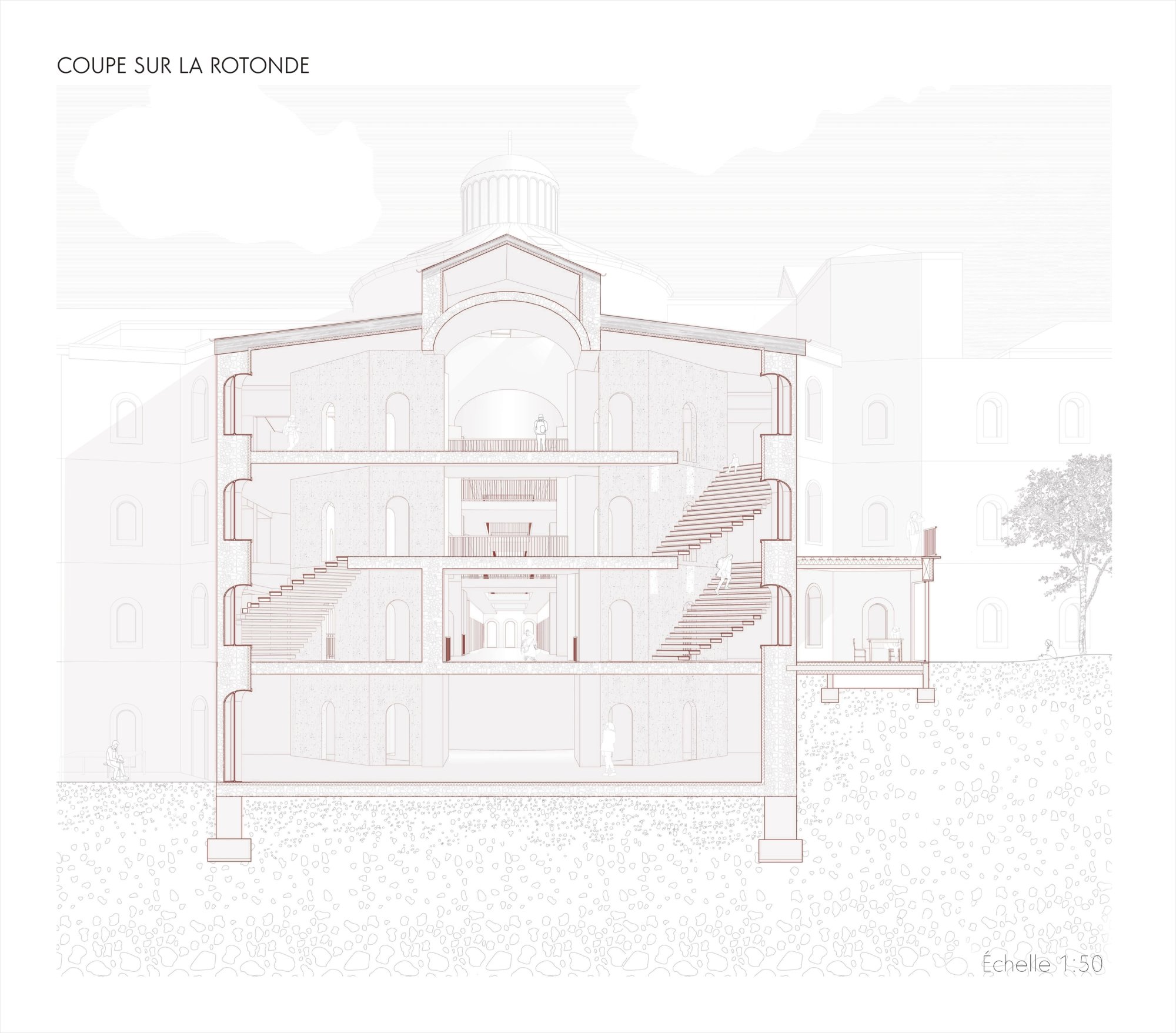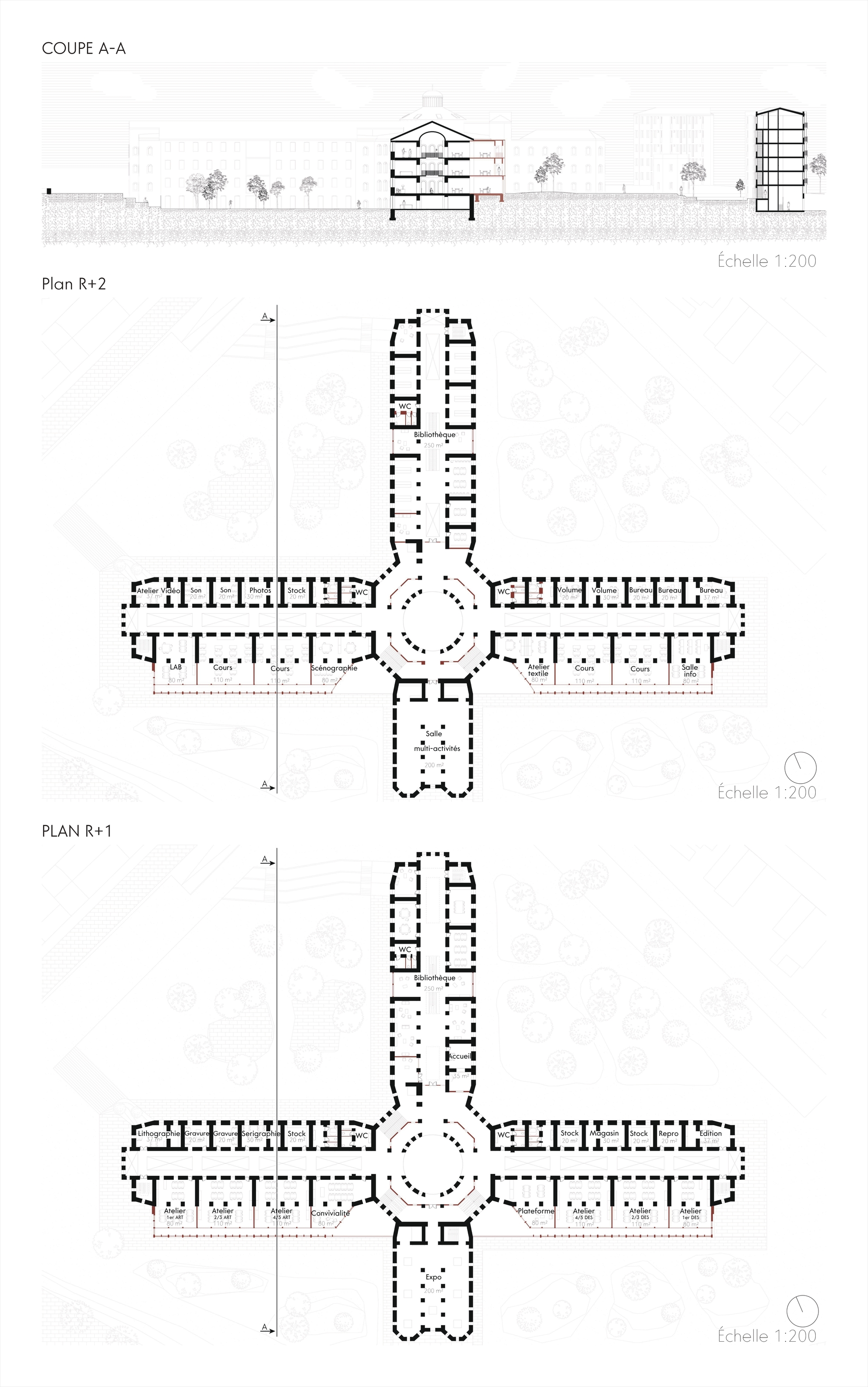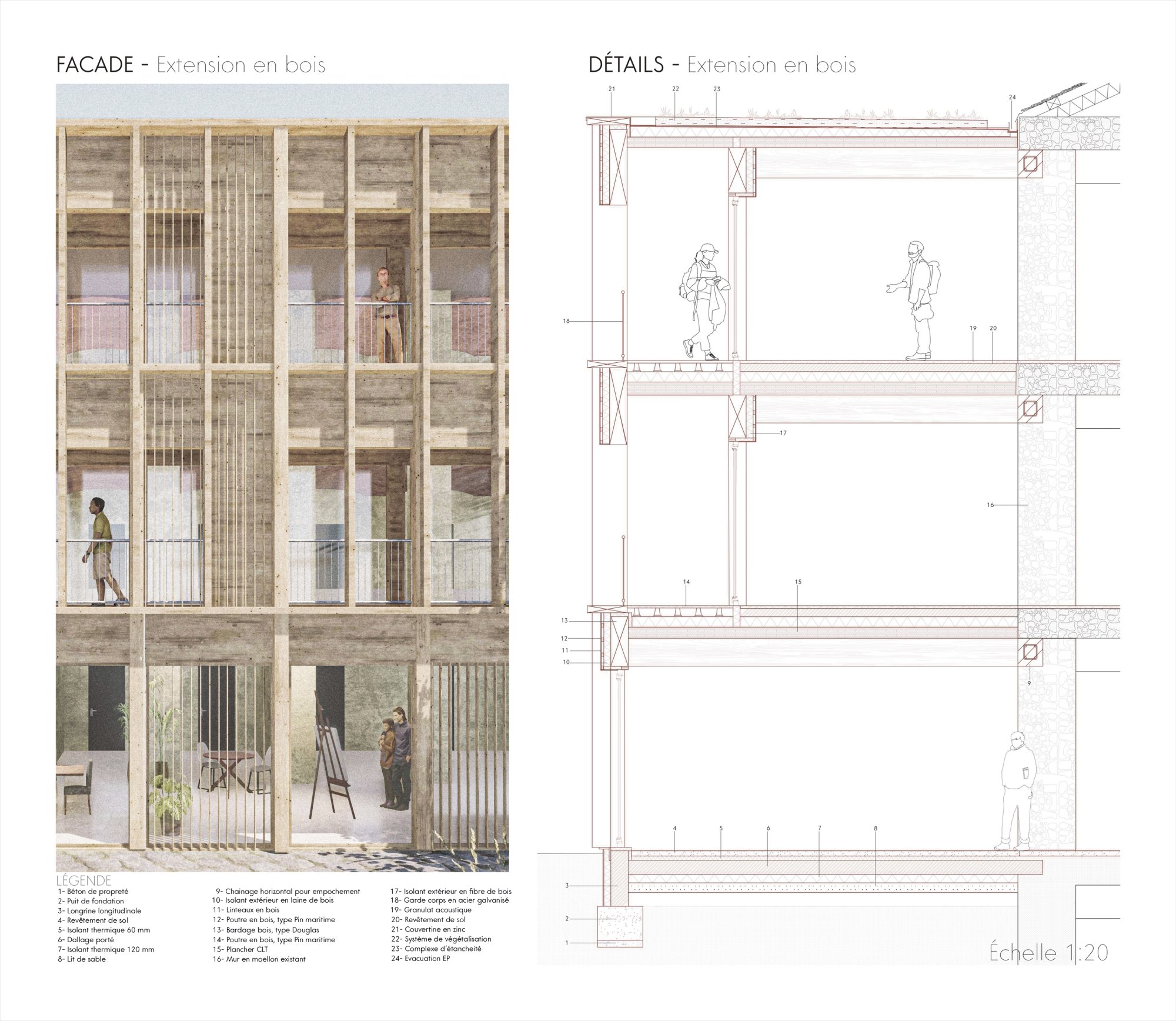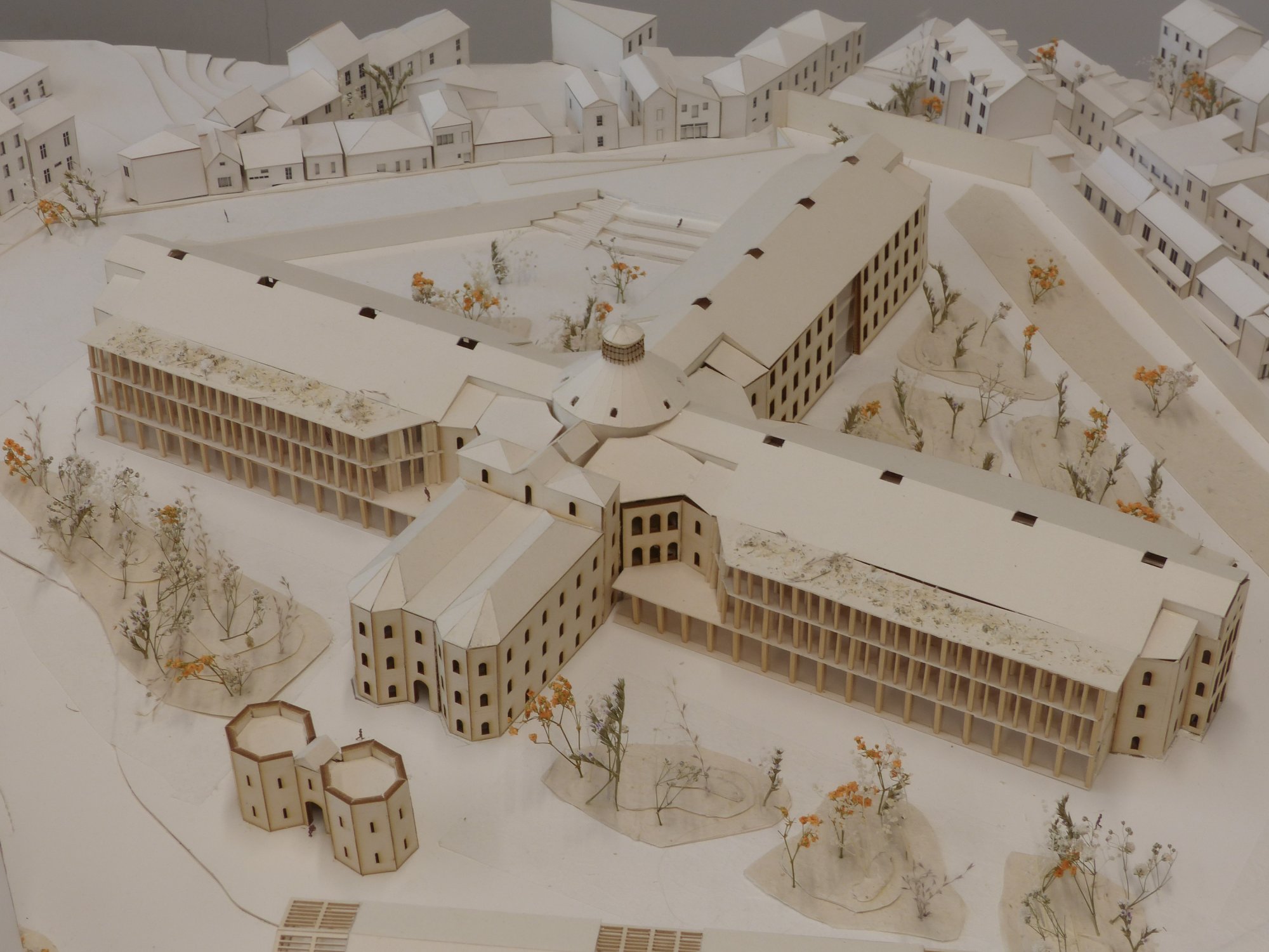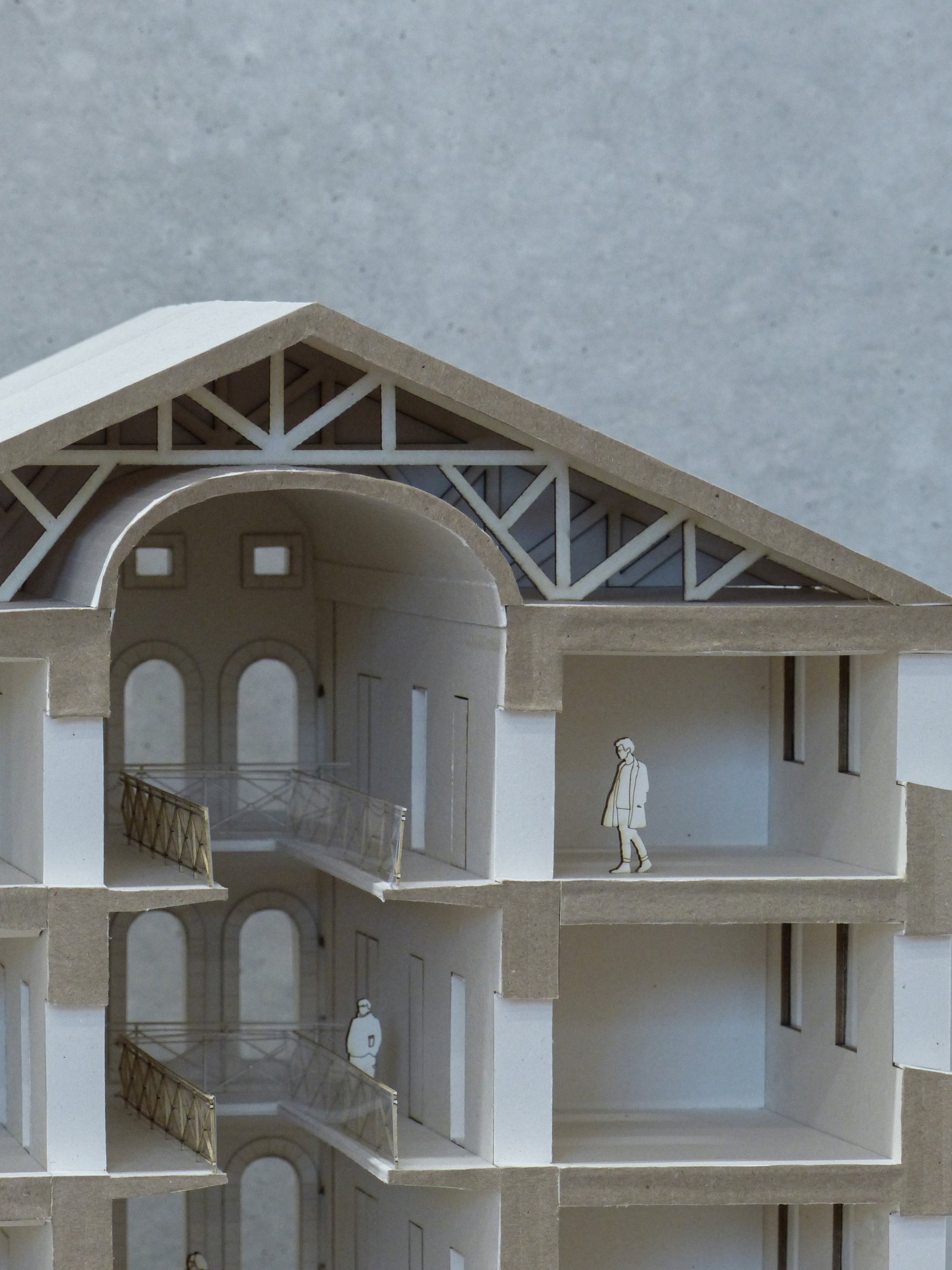Philippine HUBERT
Reconversion de la maison d’arrêt d’Angers
Certains bâtiments portent en eux une histoire complexe et souvent
sombre.
Les établissements pénitentiaires sont souvent exclusivement perçus comme des lieux symboles de punition et de privation de liberté.
Cependant, ces structures architecturales, chargées d’histoire, offrent un potentiel de transformation et de réappropriation sociale considérable.
Ce projet de fin d’études vise ainsi à anticiper le devenir d’un patrimoine carcéral fort : celui de la maison d’arrêt d’Angers. Bien que cette institution soit encore en activité, les fonctions pénitentiaires du lieu ont vocation à être relocalisées en périphérie de la ville au sein d’un nouvel établissement d’ici 2028, laissant alors place à une enclave de 15 000 m² au cœur du territoire angevin.
La reconversion de ce patrimoine emblématique constitue un enjeu majeur pour la ville de 150 000 habitants. Repenser l’utilisation de cet édifice permettra de renforcer l’identité culturelle et architecturale d’Angers en insufflant une nouvelle vie à un lieu empreint de mémoire.
Situé à proximité de l’hyper centre de la ville, le site de la maison d’arrêt se trouve entre deux quartiers aux caractéristiques sociales et typologiques très disparates : d’un côté, le quartier résidentiel de Saint Serge, et de l’autre, les grands ensembles urbains de Savary, caractérisés par une densité élevée et un fort taux de pauvreté. Les interactions entre ces quartiers sont très limitées, accentuées par la topographie marquée et des espaces publics restreints autour du site.
Ce clivage reflète l’évolution de l’environnement de la maison d’arrêt, depuis sa création en dehors de la ville en 1856 jusqu’à sa progressive
intégration dans l’urbanisation.
Le potentiel de la maison d’arrêt réside dans sa capacité à devenir un point de rencontre entre ces populations diverses, favorisant ainsi les échanges et renforçant la cohésion sociale.
Le projet de reconversion s’appuie sur les atouts environnants, comme la nouvelle ligne de tramway et le jardin des plantes, ainsi que sur le patrimoine architectural unique de la maison d’arrêt. La structure panoptique du bâtiment, avec ses ailes rayonnantes disposées autour d’une rotonde centrale, et l’utilisation de matériaux locaux comme la pierre de tuffeau et l’ardoise contribuent à sa singularité architecturale.
J’ai imaginé exploiter les fortes potentialités architecturales inhérentes du lieu, qui sont source d’inspiration, pour le transformer en espaces propices à la créativité en y implantant L’Ecole d’arts et de design.
Les enjeux de la reconversion incluent la préservation du patrimoine architectural tout en lui donnant de nouvelles fonctions, l’intégration du site dans son environnement et la création d’espaces et de programmes propice à l’attractivité et la mixité des populations.
L’objectif de mon travail a donc pour ambition d’imaginer la transformation d’un édifice carcéral fermé en un lieu rayonnant sur tout son quartier, vivant au rythme de ses divers usagers.




